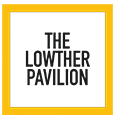This show is not currently selling online.

The Arts Society Fylde Monthly Lecture -February 2025
Showing on Wed 5 Feb 2025
A Concise History of Our Great British Parks
Wednesday 5 February 2025 at 2.00 pm at the Lowther Pavilion. Guests may attend the lecture – £10 pp (pay on door)
Lecturer: Paul Rabbitts
This will be Paul Rabbitts’ first visit to The Arts Society Fylde. Paul Rabbitts graduated at Sheffield with a BA Honours in Geography followed by a Masters Degree in Landscape Architecture at Edinburgh. He is currently studying for a PhD at the University of East Anglia on the subject of music and entertainment in public parks from the 1830s onwards. He is a qualified landscape architect and celebrated parks and open spaces manager and has worked for several local authorities across the UK, including Carlisle, Middlesbrough, Watford, Southend-on-Sea and is currently Head of Parks at the City of Norwich. He is a passionate advocate for public parks and in particular, the Victorian and Edwardian bandstand and is a prolific author on the subject. His first of now 34 books was published in 2011 on the iconic bandstand and was followed rapidly by books on the Royal Parks, Great British Parks and ‘Parkitecture’, Grinling Gibbons and Sir Christopher Wren. He has also completed the first full biography of Decimus Burton, Gentleman Architect, which was published in late 2021. His latest book is called People’s Parks – The Design and Development of Public Parks in Britain – was published in November 2023. Now a UK leading expert on bandstands he has been asked to assist in localised restoration projects nationwide and has been a regular and popular speaker on bandstands and public parks for many years.
The Lecture
Paul’s lecture will offer a fascinating insight into the history of one of our greatest ever institutions – our Great British Public Park. We have all enjoyed them at some time in our lives but what do we really know about them? What are their origins? This talk illustrates their origins from the great Royal Parks to the Pleasure Gardens of the eighteenth century, to their Victorian heyday. It discusses what makes a great park, it’s ‘parkitecture’ with examples of lodges, lakes, bandstands, fountains, lidos, palm houses and to their wonderful floral displays, to their great decline in the sixties, seventies and eighties. However, the subsequent revival has led to a major shift in interest in our parks and once again we are very much in love with them. This is a highly illustrative lecture accompanied by slides with examples of parks from across the UK and their designs and architecture.

